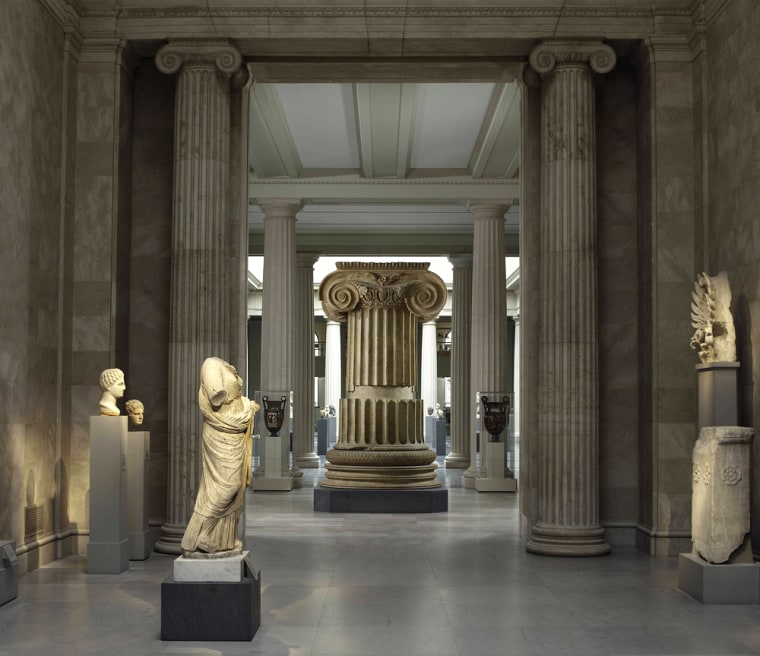The original plan for the south galleries at the Metropolitan Museum of Art was to make them the home for the museum's Greek and Roman holdings. Somewhere along the way that changed, and by 1954 much of that space was turned into a restaurant.
But now, after a 15-year, $220 million project, it's again all about the art. The museum's new Greek and Roman galleries — centered on a two-story skylit hall that evokes a Roman public space — opened to the public Friday.
Philippe de Montebello, the museum's director, called the opening "a truly defining moment."
With the galleries once again home to ancient statues, bronze sculptures and even an Etruscan chariot, visitors will get a glimpse of history in a logical order — from the north end, which houses Egyptian art, to the new spaces in the south end spanning from the Bronze Age through the reign of Constantine, said Carlos Picon, curator in charge of the Greek and Roman art department.
"It was the original intention for it to be a chronological sweep through millennia," he said. "It's exciting to be able to think of the crowds that will come in and for the first time get a complete view of the entire classical world, beginning to end."
The newly renovated galleries cover a period from about the fourth century B.C. to the fourth century A.D. and bring thousands of pieces of the museum's collection out of storage.
The centerpiece of the new galleries is a grand space that even on a rainy day is bathed in light. In its original iteration, the gallery's skylight roof was only one story up; for the new version, the roof has been raised an additional story. Columns line the atrium, with a black fountain in the center.
Statues and sculptures in the court range from mythological figures such as Hercules to historical images of rulers such as Caligula.
Around the main court are smaller galleries, covering Southern Italian art and Hellenistic and later Roman Empire artifacts. On the mezzanine level, there is a gallery space dedicated to Etruscan art, as well as a large study center that contains some 4,000 pieces covering the entire span of time showcased in the new galleries.
"It's a great achievement for the museum," said Christopher Lightfoot, an associate curator who helped manage the endeavor.
It wasn't an easy achievement. The project — the largest in the museum's history — not only involved renovating the space, but taking a look at the entire collection, a huge task in and of itself.
"Things were put in several different basements, things were locked up in boxes," Picon recalled.
There were discussions about which pieces needed to be conserved. People had to be hired _ the department went from three staff members to 16.
The whole section of the museum had to be reconfigured, since after all, the offices and dining room that had occupied the space had to be put somewhere.
"It's a gigantic effort on five different levels," Picon said. "It's not just the Greek and Roman galleries, it's a major part of the institution."
By 1996, Picon realized he was looking at a longer timeline than he had thought.
When the project started in the 1990s, Picon said, "we thought it would be five to seven years."
